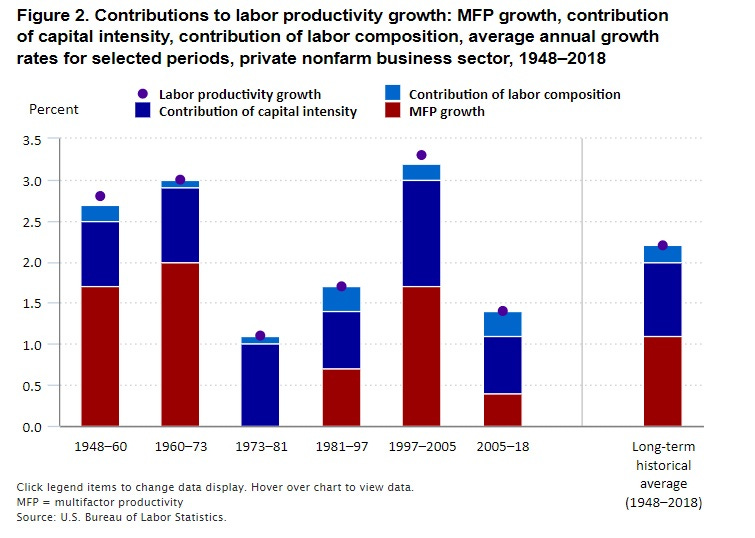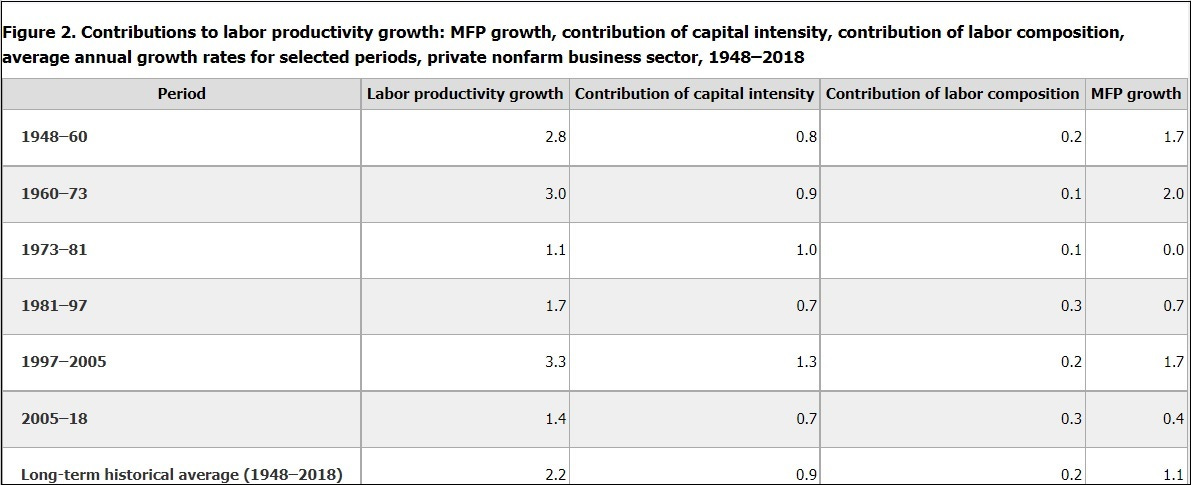☹ (Un)Happy 50th anniversary of the Great Stagnation! But there's hope!
If you have 'growth mania,' this is the issue for you!

The quarter century after World War II has been called a “golden age” for the American economy. Real GDP growth averaged nearly 4 percent annually, driven by labor productivity growth of nearly 3 percent. Then came a sudden and shocking slowdown in 1973. (So happy 50th anniversary!) And whatever you want to call the past half-century — the Great Stagnation, the Long Stagnation — the slower pace of productivity and economic growth has continued for so long that it really is a New Normal, or maybe just, you know, normal.
One way to gauge the importance of the downshift is through a simple thought experiment once offered by economist Jason Furman when he was the top economist in the Obama White House:
… what if productivity growth from 1973 to 2013 had continued at its pace from the previous 25 years? In this scenario, incomes would have been 58 percent higher in 2013. If these gains were distributed proportionately in 2013, the median household would have had an additional $30,000 in income. Had income inequality and labor force participation not worsened markedly, middle-class incomes would be nearly twice as high.
A few more numbers for context and then a discussion:
1973 saw the start of nasty recession extending from November of that year through March 1975, including five consecutive quarters of declining productivity, beginning a stretch where productivity growth averaged just 1.1 percent through 1981.
Since then, real GDP growth has averaged 2.5 percent, including a further deceleration to 2 percent in the 2000s.
Likewise, labor productivity growth has mostly been underwhelming compared to its immediate postwar performance:
Notice, particularly, what’s been happening with the slowdown total factor productivity, which is stands-in for technological progress and business practice innovation. It accounts for nearly half of long-term productivity growth, including most of growth during the postwar “golden age.” But pretty much weak-sauce since then, with the exception of the boomy mid-1990s to mid-2000s.
Finally, this is a great chart that shows just important faster productivity growth is to future economic growth given the slowdown in labor-force growth due to baby boomer retirements and falling fertility rates:
So what happened? Where do I start?
Keep reading with a 7-day free trial
Subscribe to Faster, Please! to keep reading this post and get 7 days of free access to the full post archives.






